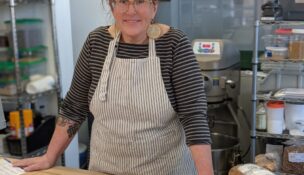Best of CoBiz: Building with the arts
Neil McKenzie //August 22, 2013//
As we move our state ahead in developing our economy, one of the most crucial problems we must solve is how to finance our existing companies and provide funds for the many entrepreneurial organizations just waiting to take off. This challenge is just not a Colorado problem but a national one as well.
Banks don’t seem to be lending, corporations are sitting on record amounts of cash and the venture capital community is capable of providing only a tiny amount in the scheme of things. Growing our existing companies and enabling the entrepreneurial spirit are likely to play a large part in moving Colorado’s economy forward.
The lack of business access to capital is the result of many factors. Some of these factors are:
• The overall downturn in the economy and general lack of demand.
• A lack of confidence and certainty by businesses and consumers.
• The financial condition of the banks and their inability / unwillingness to make loans.
• Globalization and the ease with which money can move across borders seeking a higher rate of return.
• Regulations which inhibit business financing and make it expensive.
• Lack of a coherent system to match those who need money with those who can provide it.
Luckily for Colorado, there is a group working to help create innovative models for how we finance our state’s businesses – The Colorado Capital Congress. The Colorado Capital Congress is the brainchild of Karl Dakin, a long-time Colorado entrepreneurial and business financing consultant who currently serves as the Executive Director of the Sullivan Chair for Free Enterprise at Regis University.
The organization was created for members of the public who are interested in increasing access and reducing barriers to capital for Colorado businesses by having a forum to develop real life solutions. Ideas are currently being solicited and explored that improve the funding process for: for profit, not for profit as well as social enterprises.
In my last article, I talked about how having a vibrant arts and cultural community can help attract businesses and make it easier for them to recruit and retain employees. One way to develop an arts community is to create an arts district or “magnet” for an area’s creative talent.
There are several arts districts in our state, including the Santa Fe Arts District in Denver, Aurora Arts District in Aurora, Depot Arts District in Colorado Springs, Breckenridge Arts District in Breckenridge and the Downtown District in Salida, just to name a few. There are many other areas across the State that don’t have formal art districts but the idea is the same, support local creative businesses, revitalize the area for all businesses and citizens and increase tourism – in short build the local economy.
The Colorado Legislature passed a bill to help support the development and growth of art districts. It’s great to see that our elected leaders recognize the large creative sector in our state and how it can benefit our economic development. It will be up to local communities to develop their own creative districts, gather support, finance the project and provide funding for marketing and other ongoing costs. Given the fiscal challenges that the state faces most of these new districts will have to be creative on how they fund their efforts – here is where the Colorado Capital Congress might be of help.
One of the ideas that the Congress is developing is what is known as a Community Impact Investment. The purpose of this type of investment is to fund an organization that serves a community purpose while providing a return to investors or lenders. This vehicle does not rely on government funding or grants from foundations but rather from investments made by community members who have a stake in seeing the organization succeed.
An art district might form a corporation and raise funds through a private or direct to public offering to businesses in the art district as well as members of the local community. This model would likely limit the number of shares any individual shareholder could own to insure that control of the corporation would not be concentrated in the hand of a few. A few laws in Colorado regarding sale of securities might also need to be tweaked if the arts district wanted to bypass the normal broker channel.
Work of the art district would be monetized in the form of sales of products, services, advertising or possibly memberships so as to create a source to repay local investment. One of the challenges facing all art districts is to expand the geographic reach in which they sell their products and services. If a district only relies on monthly art walks or periodic festivals then it will be hard for individual businesses and artists to be successful – expanding the reach of an arts district is critical to success. In effect, for a community to succeed, it must export its art to other areas.
The advantages of using the Community Impact Investment model to fund an arts district include:
• Less reliance on government funds or grants.
• Ability for the district to raise money directly from investors to decrease the cost of raising money.
• Investors / community members will have “skin in the game”.
• Investors will be paid back in the form of a share of revenue, interest or dividends.
• The art district is creating a hybrid “for profit” organization run like a business.
• Revenue generating activities are created which contribute to a sustainable enterprise.
As communities across the State seek to develop art districts, they will need to be as creative in funding as they are in showcasing their artistic and cultural talents. Ideas being explored by the Colorado Capital Congress may just fit the bill.

























